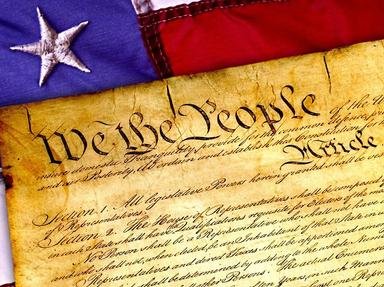Quiz Answer Key and Fun Facts
1. After the Battle of Valcour Island, Benedict Arnold once again had to appear before the Continental Congress to defend his honor. On his way, Arnold detoured to Danbury, Connecticut, where British troops had burned the town and were about to burn nearby towns. Arnold and members of the Connecticut militia attacked the superior British force at the Battle of Ridgefield. What happened?
2. When Congress refused to reinstate his seniority, Benedict Arnold resigned from the Continental Army. However, George Washington asked him to return due to the loss of Fort Ticonderoga. Arnold's first mission was to relieve the garrison at Fort Stanwix (also known as Fort Schuyler) in August 1777. A British force of 2,000 had besieged the 800 soldiers inside the fort for about three weeks and had ambushed and devastated a prior relief column. Although Arnold had well under 1,000 troops, he broke the siege without the loss of a single soldier in his force. How?
3. Despite Benedict Arnold's success in breaking the siege of Fort Stanwix, Congress put Major General Horatio "Granny" Gates, an administrator who had never commanded troops in battle, in command of the American forces on the Hudson River. Arnold planned to engage the British just south of Saratoga, New York. However, during the first Battle of Saratoga, Arnold was attempting to break the British battle line when Gates, who was not on the field, removed Arnold from command in the middle of the battle. How did Gates address this in his official reports about the battle?
4. Among the troops removed from Benedict Arnold's command after the first Battle of Saratoga was the company led by Colonel Daniel Morgan, who had served under Arnold in the expedition to Quebec and later masterminded the Battle of Cowpens. Morgan's company carried an unusual weapon that Arnold used to great advantage in these battles. What was it?
5. The second Battle of Saratoga (also known as the Battle of Bemis Heights) took place in October 1777. Although Major General Benedict Arnold technically commanded no troops during the battle, he heard the sounds of the fighting from his headquarters, rode to the troops, took command on the field and personally led the charges that took out the British defensive line, forcing the British into a panicked retreat. What happened to Arnold?
6. The "Boot Monument" at the Saratoga battlefield honors the heroism of Benedict Arnold during the second Battle of Saratoga. What is unusual about the "Boot Monument"?
7. As Benedict Arnold recovered from his wounds, he spent the winter of 1777-78 at Valley Forge on General George Washington's staff. What was the name given to the group of men, including Generals Horatio Gates and Thomas Conway, who tried to use Gates' claim of being "the hero of Saratoga" to replace Washington with Gates as commander-in-chief of the colonial troops during this winter?
8. After the British abandoned Philadelphia in June 1778, George Washington appointed Benedict Arnold as military commander of the city, and he remained in that post for two years. Which of the following events happened to Arnold during this period?
9. Major General Benedict Arnold agreed to turn over a colonial fort to the British in return for a payment of £20,000 and commission as a general in the British army. Which New York fort did Arnold agree to turn over?
10. After the Revolutionary War, Benedict Arnold found that he was very unpopular with the Whigs, the anti-war party in England which was now running the British government, and he decided to return to North America in 1787. Where did he move?
Source: Author
AyatollahK
This quiz was reviewed by FunTrivia editor
bloomsby before going online.
Any errors found in FunTrivia content are routinely corrected through our feedback system.
